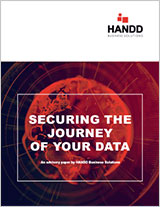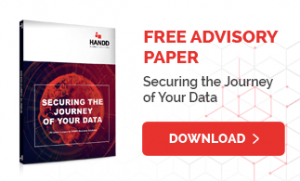Mobile data classification
Mobile devices have increasingly become a part of our working life.
The average person touches their phone 2,617 times a day (according to Network World) and, with average estimations of time spent on the phone being between 4.5 and 6.5 hours a day, it’s inevitable that we create a fair bit of data on our smartphones too.
It isn’t just our phones either, but tablets, laptops and iPads too.
Just because data is sent from your smartphone, doesn’t mean it shouldn’t be valued and protected in the same way as a document or an email. It can be equally important and equally sensitive in nature.
What is mobile data classification?
Data created on the move can still be classified at the point of creation. Software can be downloaded to your mobile devices for all-round streamlined classification.
Mobile data classification can help users to keep their home life and work life separate on their mobile devices too, while visual markings added to documents can enhance your users’ awareness of the value of data. Some solutions can even limit the visibility of your most sensitive data files to office access only.
And through the integration of DLP, emails and other data files sent in contravention of your company policy can be stopped in their tracks, with the attempted send logged in your user dashboard for later review and analysis.
Supported devices
- Android smartphones
- iPhones
- iPads
- Blackberry devices
- Android and fire tablets
- Macbooks
- Laptops
Deployments
We secure the entire journey of your data, from consultancy and technical design, right through to installation, training and support.
Challenge: Controlling data with vast user access
With over 4000 end users, an Insurance industry client came to HANDD for help. They needed to ensure policy details couldn’t be sent to unauthorised external parties by email. Using data classification, we identified and classified new documents containing policy numbers. Then we integrated the classification platform with the client’s Symantec DLP solution, enabling DLP to work more efficiently to ensure sensitive content only travels to cleared recipients.
Challenge: Managing compliance with large volumes of legacy data
With billions of records to sift through and strict compliance mandates, a global bank needed to get control over their legacy data. First, using a discovery tool HANDD helped them identify their sensitive data and discover where it was stored. Then, we labelled their data using Data Classification. This enabled them to apply protective measures efficiently to their most sensitive files for the first time.
Challenge: Ad-hoc application of protective measures
Staff typing SECURE into email subject lines to trigger downstream protection of sensitive data left plenty of scope for error. At this leading financial services organisation classification was inconsistent and ad-hoc. Security of delivery was unreliable. They contacted HANDD for help improving their classification processes. We implemented a Data Classification solution that would automatically classify emails. Integrating with a message gateway it prevents data falling into the wrong hands.
Challenge: Controlling data with vast user access
With over 4000 end users, an Insurance industry client came to HANDD for help. They needed to ensure policy details couldn’t be sent to unauthorised external parties by email. Using data classification, we identified and classified new documents containing policy numbers. Then we integrated the classification platform with the client’s Symantec DLP solution, enabling DLP to work more efficiently to ensure sensitive content only travels to cleared recipients.
Challenge: Managing compliance with large volumes of legacy data
With billions of records to sift through and strict compliance mandates, a global bank needed to get control over their legacy data. First, using a discovery tool HANDD helped them identify their sensitive data and discover where it was stored. Then, we labelled their data using Data Classification. This enabled them to apply protective measures efficiently to their most sensitive files for the first time.
Challenge: Ad-hoc application of protective measures
Staff typing SECURE into email subject lines to trigger downstream protection of sensitive data left plenty of scope for error. At this leading financial services organisation classification was inconsistent and ad-hoc. Security of delivery was unreliable. They contacted HANDD for help improving their classification processes. We implemented a Data Classification solution that would automatically classify emails. Integrating with a message gateway it prevents data falling into the wrong hands.


